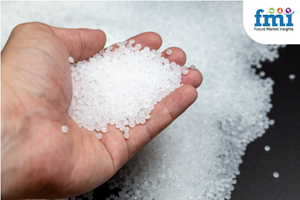Growth in Auto Production to Slow in 2016
Trends in leading indicators explain why.
The automotive industry has been fairly strong since 2010. Interest rates were low and incomes were improving, which spurred spending on motor vehicles and parts (MV&P). But the industry is likely to see its slowest growth since 2010 later in 2015 and into 2016. A look at the leading indicators explains why.
Real 10-Yr Treasury Rate: The real (inflation-adjusted) 10-yr Treasury Bond interest rate was 1.63% in June. The nominal rate is still only about a third of its historical average. However, inflation is historically low. The current annual average inflation is just 0.12% vs. a historical average of 4.15%. Therefore, the real Treasury rate is about two-thirds of its historical average. But low inflation is keeping real Treasury rates higher than in the recent past.
The Federal Reserve claims it will raise interest rates this year. However, with very low (or negative) inflation and a generally stable bond yield, it is likely that real 10-yr Treasury rates will continue to rise. Therefore, the trend in the real 10-yr rate is a negative sign for future automotive spending. Rising rates make cars more expensive. And, there are signs that new car sales have relied fairly significantly on sub-prime auto loans in 2015. Higher rates make it harder to find eligible sub-prime buyers.
Real Disposable Income: May’s real disposable income was roughly $12.3 billion (seasonally adjusted at an annual rate), an all-time high. In May, disposable income grew 3.5% compared with a year ago for the second month in a row. The current rate of annual growth was 3.1%. It appears that disposable income will see further accelerating growth over the next few months, but there are signs that it is nearing its peak rate of growth. While the trend in disposable income is a positive sign for automotive spending, it is likely outweighed by the trend in interest rates.
Real Motor Vehicle & Parts Consumer Spending: In May, real MV&P spending was at its highest level since July 2005 and its third highest level ever. Since 2010, the annual growth rate of spending has generally accelerated. In 2015, the annual rate of change in MV&P spending has grown at a rate of about 8.5%. The current rate of growth was more than double the historical average.. While the spending numbers are positive, the trend within the data indicates that spending is likely to grow at a slower rate in the near term.
Motor Vehicle & Parts Industrial Production: Automotive production tends to lag spending by up to six months. So, if the industry is entering a period of slower growth in spending, then MV&P production should see slower growth in 2016. Also, growth in production is likely to slow because the rate of growth in production since 2010 has been well above the rate of growth in spending (see chart).
Related Content
Impacts of Auto’s Switch to Sustainability
Of all the trends you can see at NPE2024, this one is BIG. Not only is the auto industry transitioning to electrification but there are concerted efforts to modify the materials used, especially polymers, for interior applications.
Read MoreCarbon Fiber Reinforced Nylon 12 for Injection Molding
CRP Technology’s new composite is 100% recycled from Windform XT 2.0 IMG industrial 3D printing material.
Read MorePlastic Compounding Market to Outpace Metal & Alloy Market Growth
Study shows the plastic compounding process is being used to boost electrical properties and UV resistance while custom compounding is increasingly being used to achieve high-performance in plastic-based goods.
Read MorePEEK for Monolayer E-Motor Magnet Wire Insulation
Solvay’s KetaSpire KT-857 PEEK extrusion compound eliminates adhesion and sustainability constraints of conventional PEEK or enamel insulation processes.
Read MoreRead Next
Lead the Conversation, Change the Conversation
Coverage of single-use plastics can be both misleading and demoralizing. Here are 10 tips for changing the perception of the plastics industry at your company and in your community.
Read MoreSee Recyclers Close the Loop on Trade Show Production Scrap at NPE2024
A collaboration between show organizer PLASTICS, recycler CPR and size reduction experts WEIMA and Conair recovered and recycled all production scrap at NPE2024.
Read More
.JPG;width=70;height=70;mode=crop)









